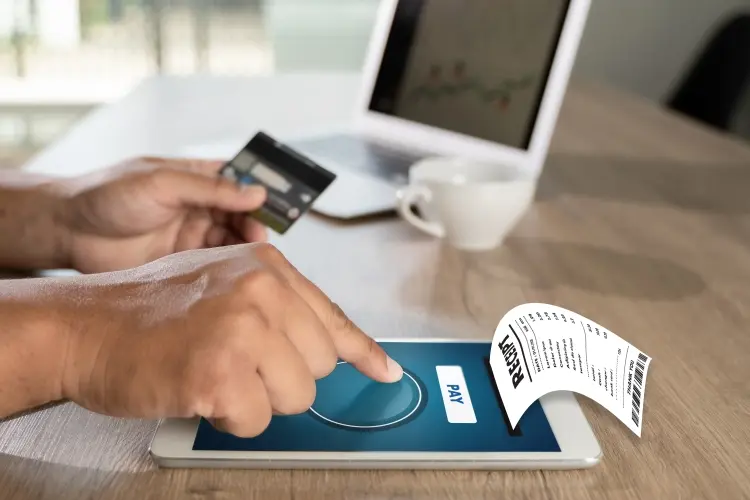by Tony Joshie
Since time immemorial, different methods have been employed to effect the payment of goods and services. At this time, you need to pay for products purchased from physical stores with cash. Also, the payment of goods in physical cash - limits their patronage.
Contents
Nowadays, the payment of products and services has become quicker and easier for all customers. With the use of updated technology, buyers of goods and services can now make payment at the comfort of their couch. The payment method is also of great benefit to the merchants because they now record increased patronage from clients in various parts of the world. The business world has also witnessed the introduction of e-commerce stores, where all individuals can seamlessly purchase goods and services. All these tremendous innovations have become possible with the introduction of the credit card.
With the credit card, you can pay for all purchased items seamlessly. The credit card has a lot of information on it. It has the card number, expiry date, CVV, and the contact information of the issuer. The length of the card number ranges from 13 to 16. The card number has information like the 6-digits bank identification number (BIN), account number, and the check digit. The BIN number is used to acquire information like the type of credit card, the issuer of the credit card, and some other credible information. Also, the BIN number is used to verify the genuineness of the credit card. Through the BIN number, merchants can verify if the customer has enough funds to purchase the goods before payment is authorized and cleared. The credit card issuers are preparing for the migration of the BIN number for the six to eight digits. While some card users are not informed about this development, others are yet to understand how to prepare for the migration of credit cards issued to 8-digit BINs. Therefore, today, I will be telling you how you can prepare for the migration from the six-digit to eight-digit BIN.

As said earlier, the card number ranges from 13 to 16. The number you have on your payment card depends on the kind of card the bank or financial institution issued. In this section, I will give a detailed analysis of what number or set of numbers on the payment card stands for.
The first digit of the credit card number represents the majority industry identifier. With this number, you can easily identify the kind of institution that issued the card.
The first six to eight digits of the card number are the BIN. With the BIN, your issuer can easily be detected. Also, relevant information about your card and account is revealed through the BIN.
The first nine digits on the card are the account number of the cardholder.
The last digit of the card number is the checksum digit. The checksum helps in validating the credit card number through the use of the Luhn algorithm.
The primary account number is the whole 16-digits on the payment card. When you want to make a payment for your card, you will need to enter the payment account number to proceed in the payment process.

As the demand for credit cards continues to increase, the payment industry is witnessing tremendous progress. However, the 6-digit BINs are fast, reaching the point of depletion. Hence, there is a need to migrate to the 8-digit BINs before the depletion occurs. With the tendency of 6-digit BIN to become depleted, the ISO (International Organization for Standard) has come up with a detailed and effective plan on how to implement migration from the 6-digit to 8-digit BINs. The date for the completion of this migration is April 2023. Once the migration is completed, the BIN pool is expected to have about 10,000,000 eight-digit BINs from the visa pool of 100,000 6-digit BINs. After April 2023, the six-digit BINs will no longer be available for assignment on the credit card. All the credit cards issued with 6-digit BINs will be supported as 8-digit BINs until they expire, and customers are issued a new card. The entities that will need to modify their cards or payment system during migration include the issuers, processors, acquirers, and merchants. Though the migration to 8-digit BIN has started sing 2019, you still have about two years to implement the migration of credit cards issued. Visa has upgraded its processing logic to handle the 8-digit BINs. Though VisaNet is not fast about the process, Visa is allowing its clients to have more time implementing the changes in the BIN number.
Years ago, the use of a credit card was widely adopted to purchase goods purchased from online merchants. With the adoption of credit cards as a payment method, the demand for the payment card increased exponentially. The number of 6-digit BINs available to card users became plenty. This also led to online merchants improving their payment processor to handle the credit card effectively without recording processing error. Also, the issuers created their card processing system around the six-digit BINs. However, the call for migration from six to eight-digit BIN became necessary because the 6-digit BINs is tending towards exhaustion. The ISO has also proceeded to validate 8-digit BINs to increase the BIN numbers available to card issuers. To ensure that all parties involved in the use of BIN continue to witness smooth payments processes, Visa has come up with a deadline believed to cater to the time needed to implement the migration from six digits to eight-digit BINs.

The migration of BIN numbers to 8-digits has some influence on the credit unions. Hence, credit unions need to work together with the card processor to commence migration as early as possible. Necessarily, 1000 8-digit BINs are equivalent to a 6-digit BIN. Any issuer that is yet to return its excess BINs before the deadline risks been charged underutilization fees. Therefore, all unused eight-digit BINs must be returned. Also, the credit union shouldn't issue another BIN except the once that are currently in use. It is important to note that clients should communicate with a third party because Visa will not communicate with them since they are not directly affiliated with it. Also, the third-party will not access the migration or facilitate testing of the 8-digit BINs. This may affect both the card-not-present and card-present channels.
With the increased demand that led to a drastic reduction in the 6-digit BINs available, there is a need to migrate to 8-digit BIN. Visa, on its part, had set up a test environment in 2019. The test environment is dedicated to processors and issuer. Before credit unions can migrate from six to eight digits BIN, they need to contact their processor. This will facilitate and speed up the migration processes.
As migration to 8-digit BIN List has become imperative, you must implement the migration before April 2023. peradventure you miss out on the deadline, you will experience misrouted transactions and payment processing error on the merchant's payment system - when making a payment with your credit card.
When the BIN number on your credit card is not in 8-digits, you will experience transaction errors. Once these errors occur, you won't be eligible to request a chargeback. Hence, you lose more money on your transactions with the payment card.
The table below summarizes the types of cards and the information provided in the 6-digits BINs system.
| Kinds of Card | Information Provided |
| Visa Cards |
|
| Mastercard Cards |
|
| American Express Cards |
|
Final Words
The migration of your card number from six to eight digits has become important - if you don't want to experience unsuitable transaction challenges. However, all merchants will have to adjust their payment processing system to accept the use of 6-digit BIN for payment. However, you need to implement the migration to ensure that your clients continue to have trust in your services. Today, I have discussed all you need to know and what you must do to prepare for the migration of your credit card from six-digits to eight-digit BIN.

About Tony Joshie
Tony's journey as a blogger began several years ago when he discovered his love for the visual arts. Fascinated by the stories behind the masterpieces and the artistic techniques employed by renowned artists, he started sharing his thoughts and interpretations on his blog.
 |
 |
 |
 |
Try FREE Gifts right here, right now. Or receive Freebies Goodies nothing but cool items.
Once successful, button below
 |
 |
 |
 |